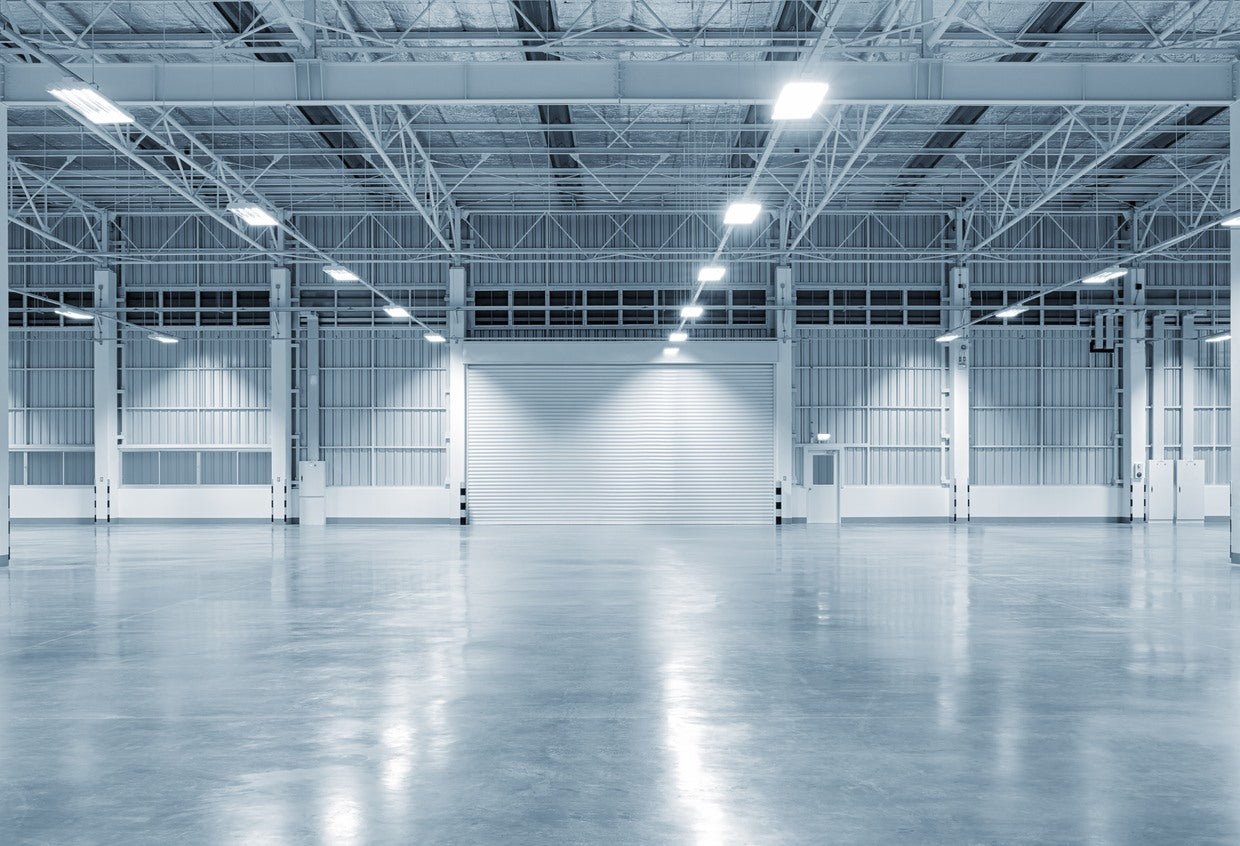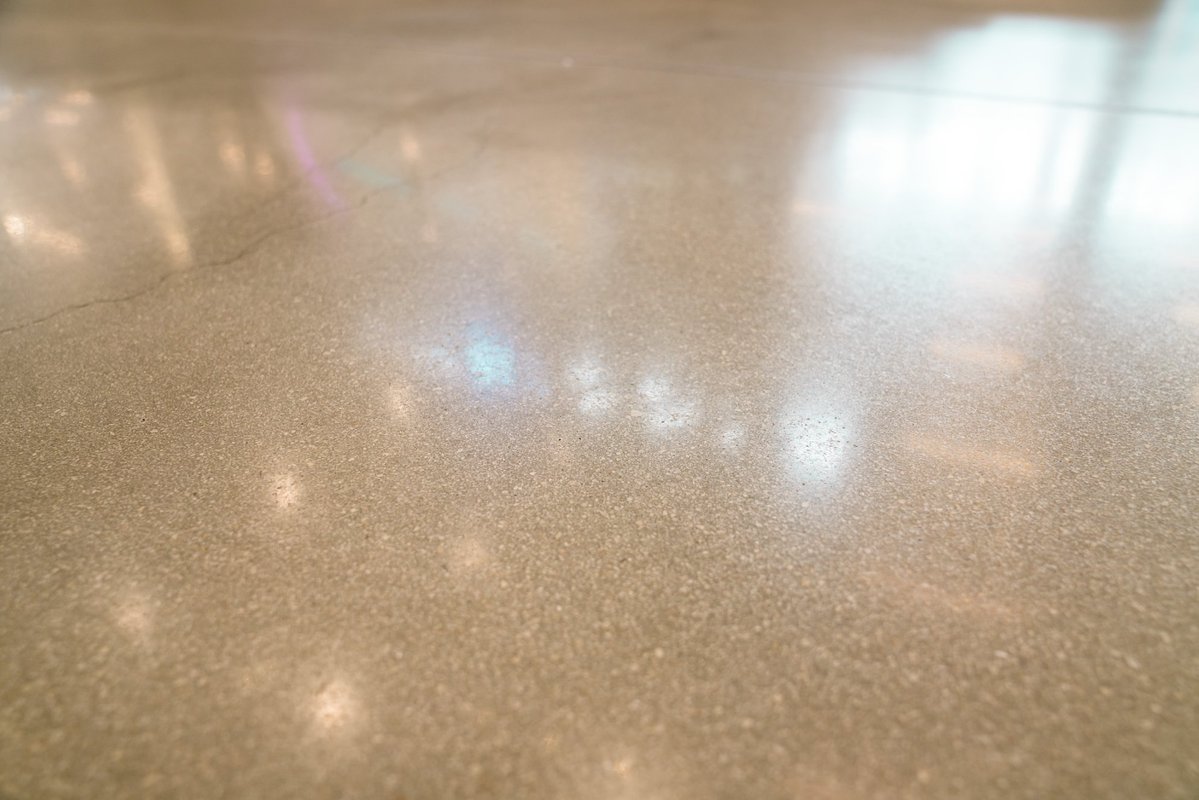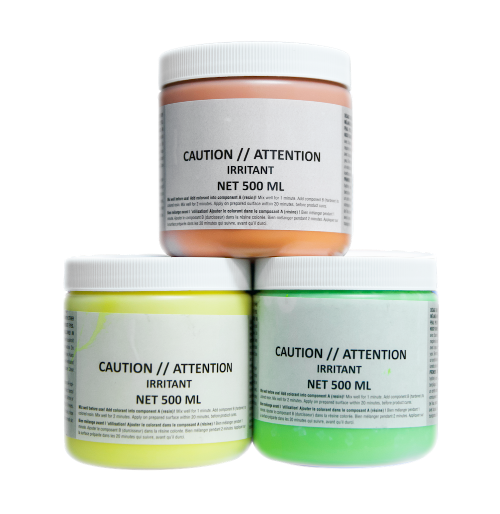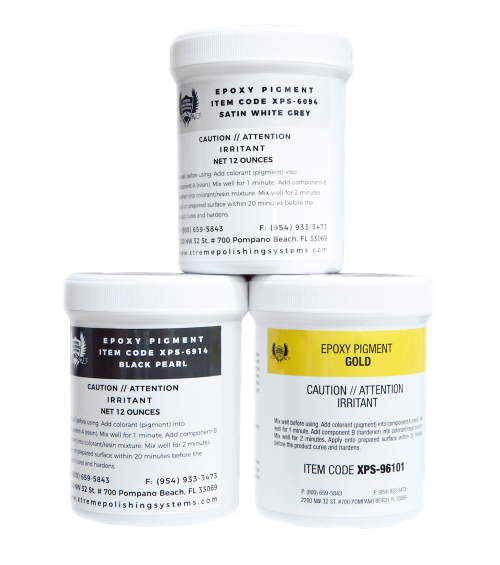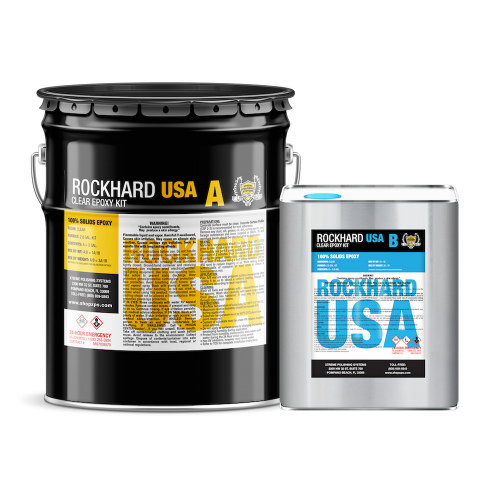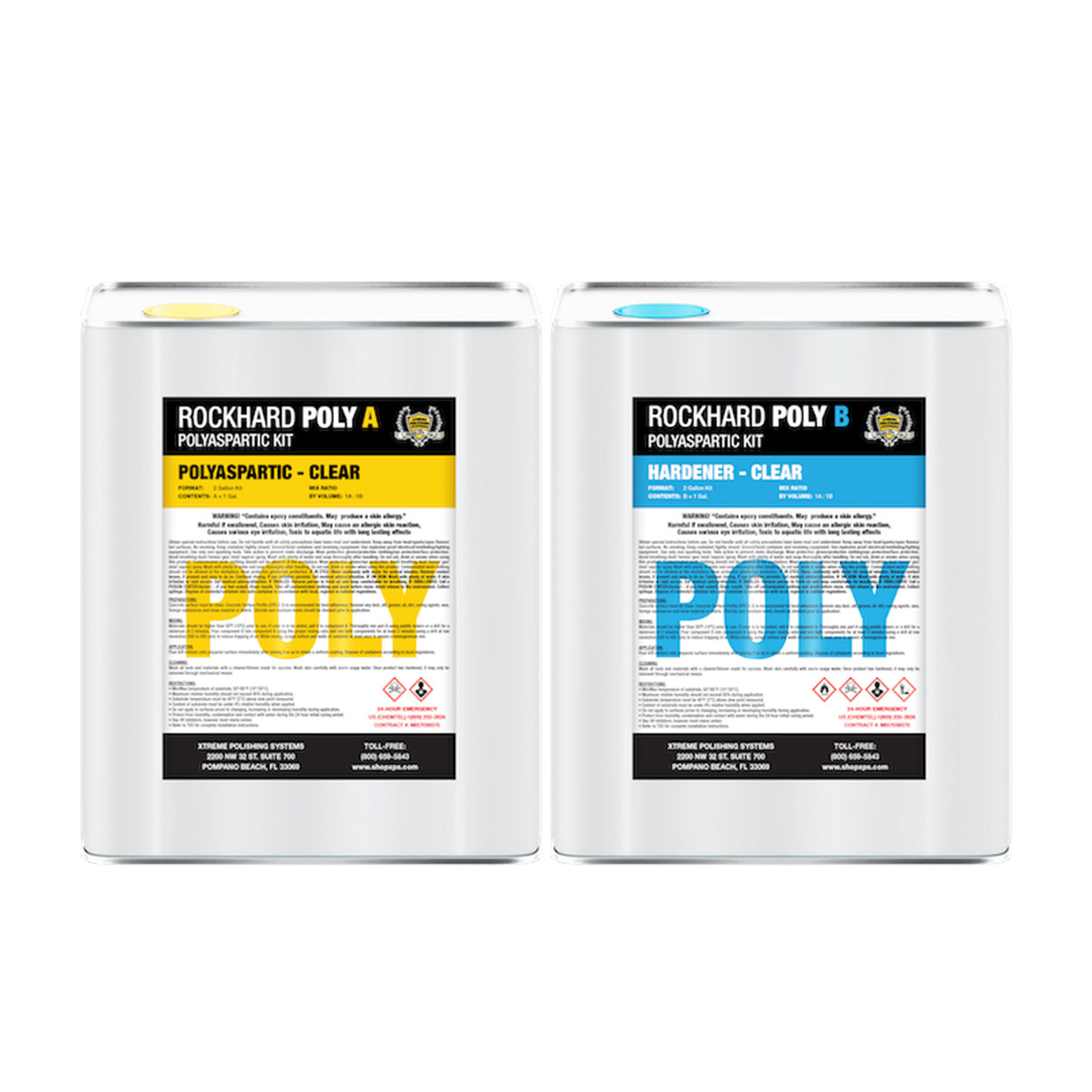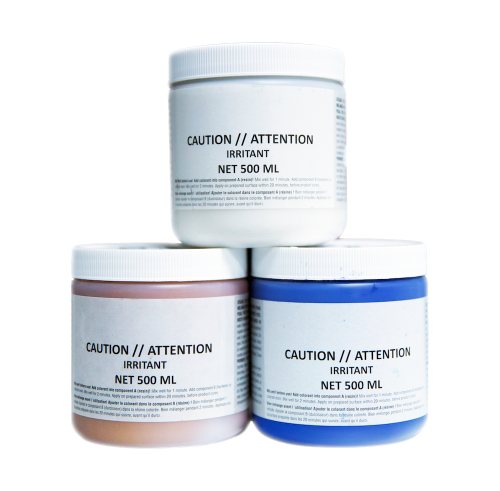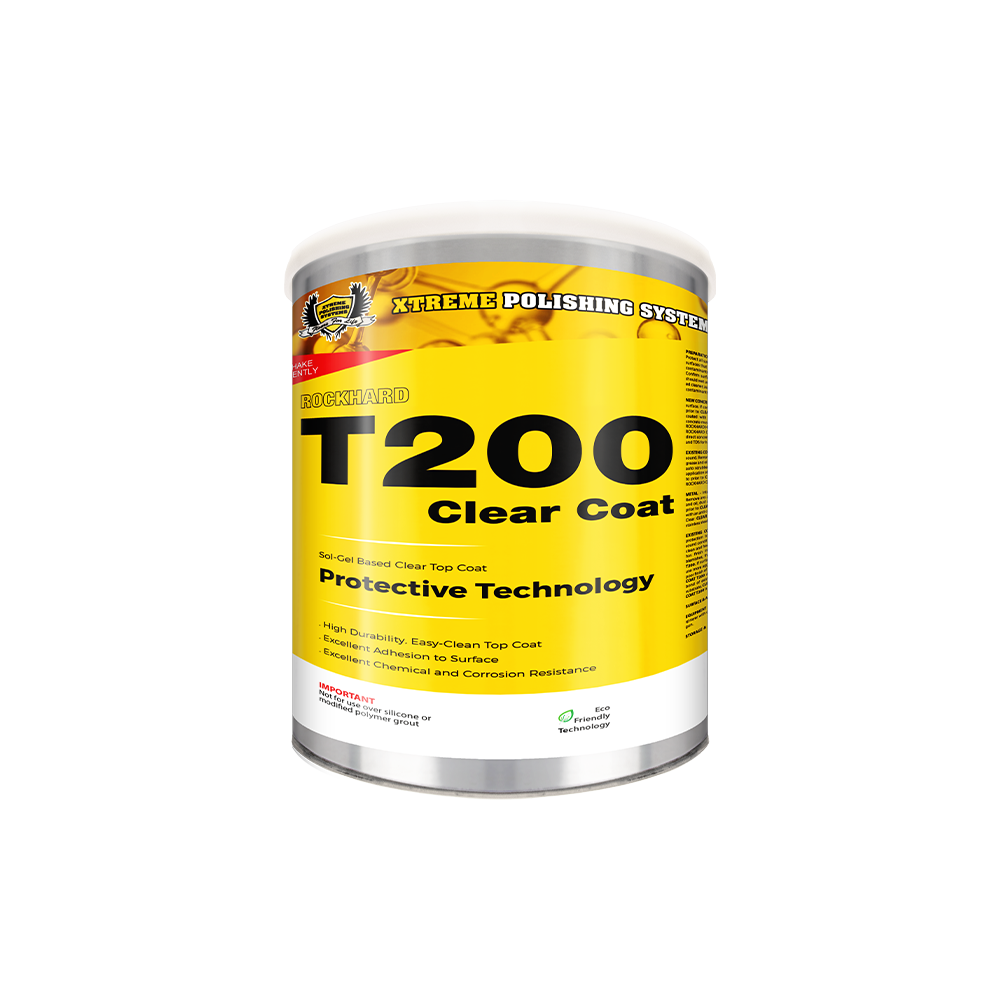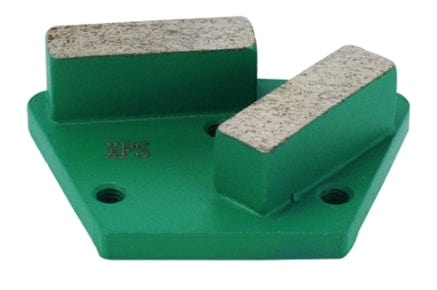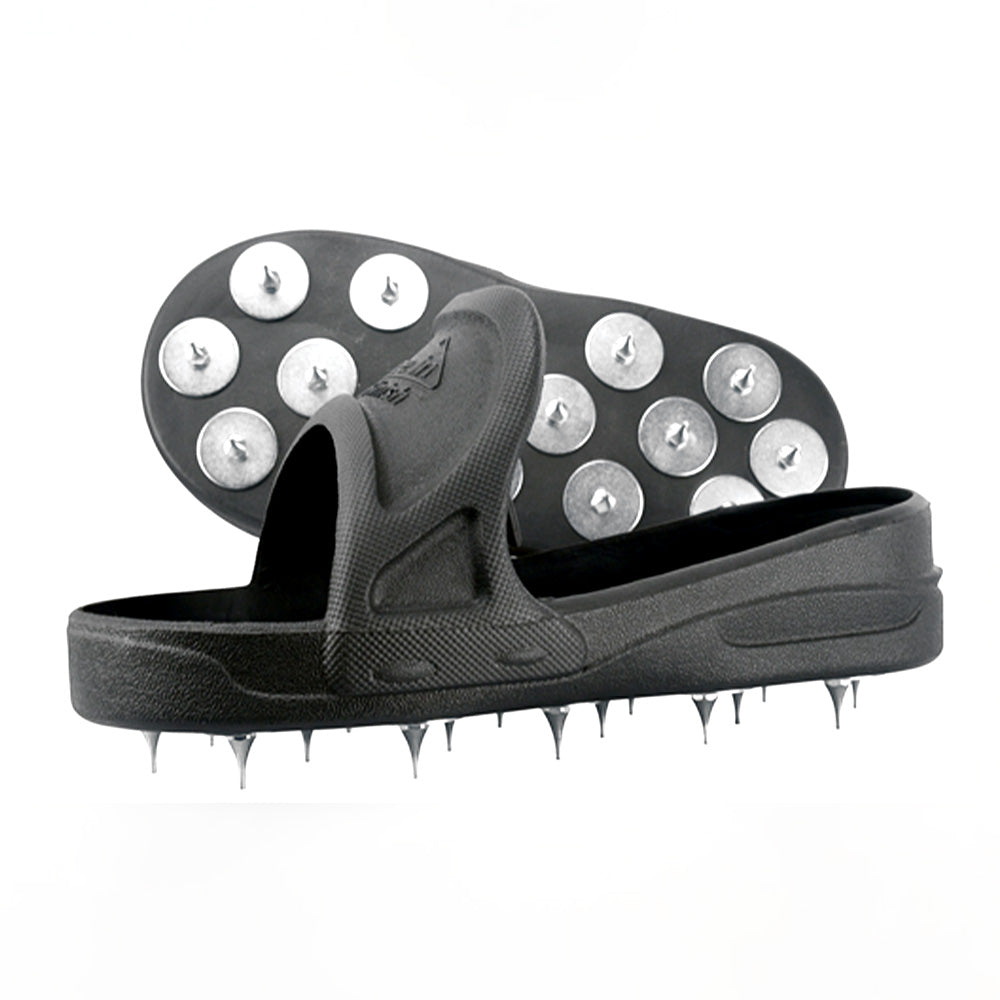Epoxy is, and will likely remain one of the top players for numerous industries, particularly in the concrete flooring and resurfacing sectors. Resurfacing is a term that describes the process of renewing existing surfaces by covering them with a surface bonding material or another type of industrial-grade coatings, such as epoxy, applying it right on top of the existing base.
Epoxy coatings have been proven to be reputable materials for resurfacing purposes because of their high performance, durability and of course because it generates the most impressive and beautiful finishes you can offer your spaces. Epoxy coatings are sure to continue evolving for many years to come!
In this article, we will discuss the different types of hard surfaces, both recommended and not recommended by our epoxy pros for applying epoxy coatings. If you are able to recognize which surfaces are compatible with epoxy, it could prevent major waste and minimize any concern for the application failing to bond to the designated surface.
NEVER Stop Learning; Knowledge is POWER
Whether you are a business owner seeking to renew your hard surfaces, a seasoned contractor currently in the field, or simply just a DIY'er who enjoys being hands-on with personal projects, it is never too late to personally cultivate oneself.
The industry as a whole is EVER-CHANGING, so be sure to wake up every morning eager to go to school. Always be inclined to further educate yourself on any given topic even if you think you have already seen and heard it all because frankly nothing that exists in this world is considered permanent or irreplaceable. Industry standards are constantly improving to reveal the newest innovations in the industry.
Knowledge for us is similar to air, it is vital to our life, so all of us can learn a little something new each and every day. The continuous modification of industry standards also helps reinforce it to accommodate the most current industry demands. This is fundamental to contemporary living because prosperity is key. Even the most traditional methods and outdated procedures have begun regularly adjusting their archaic methods to fit the newer industry trends accordingly.
The modern world we know today has some of the most impeccable desires for creating diversity, supporting innovation entirely, and above all else tremendous aspiration for achieving PROSPERITY.
The Discovery of Epoxy Coatings; How its Arrival Revolutionized an Entire Industry
Epoxy coatings have truly evolved since they were first introduced to various parts of the world ranging as far back as the early 1900s. Epoxy in its liquid form can be used to coat, laminate, and infuse a variety of materials, like concrete. Once epoxy cures, dries or hardens the material becomes resinous providing superb benefits.
Over the course of its existence, a variety of designer epoxy finishes, textures, and styles have been created forever changing the entire industry to provide a material with high-performance adhesion.
Hard surfaces around the world were finally presented with a working solution that is cost-effective, durable, and decorative in its appearance, in turn providing solutions for waterproofing and absolute strength. Epoxy coatings can produce stunning finishes and deliver seamless, tough, and resilient surfaces that are simply eye-catching in their presentation.
Epoxy coatings have many perks, so it is surely a force to be reckoned with, to say the least. Epoxy is industrial-grade, attractive, affordable, and quite literally flourishing over its competition to meet the highest demands for long-lasting, quality finishes.
How Significant is Surface Preparation for applying Epoxy Coatings?
Oftentimes, this particular step is underestimated or entirely overlooked. Cutting corners is NEVER the answer for achieving reliably strong epoxy coating finishes. Epoxy will NOT properly adhere (stick) to any surface that is unprepared, therefore surface preparation also referred to as surface profiling is involuntary.
By skipping this very important step you are throwing away any possibility for achieving quality results. Surface profiling assists by creating the necessary roughness for the adhesive properties in epoxy coatings to chemically bond the material to the surface area, thus guaranteeing that your epoxy coating will properly adhere all together.
The final outcome of your hard surfaces essentially is based on the implementation of adequate surface preparation, as well as which type of surface you have chosen to coat with epoxy. There are different types of surface materials that could impact the adhesive properties in epoxy coatings affecting their ability to chemically bond to the applied surface.
This is so critical for completing this application because let’s face it, the last thing anyone wants to do is waste their valuable time and hard-earned money, only to have their epoxy application fail and become a total disaster.
Get a clear vision for yourself so you better understand the basics surrounding how epoxy coatings should be applied. Ultimately, this will give you a better advantage for achieving brilliant, long-lasting epoxy finishes.
5 Hard Surfaces that Epoxy Coatings will stick to (although may NOT be recommended for everyone):
Nevertheless, it is imperative to know how to identify the various surfaces epoxy can properly adhere to, the surfaces it will not adhere to, and identifying the surfaces that epoxy coatings can adhere to but may NOT be recommended for everyone, by the epoxy professionals. The honest truth for some is that your enthusiasm alone can get you only so far in a field where there is little room for error without wasting time and materials.
Unfortunately, not everyone who is able to work hands-on with their resurfacing projects may not be able to attain some more distinct surfaces with the difficult tasks, which require industry skills and experience.
Without any doubt, the adhesion properties in epoxy coatings allow it to stick to most hard surfaces, each having its own advantages and disadvantages. Listed below are the 5 hard surfaces that epoxy coatings will stick to, although NOT all surfaces are recommended for everyone:
CONCRETE (#1 RECOMMENDED)
Untreated concrete surfaces are the more prominent and usually the first choice when applying epoxy coatings. Concrete must also be fully cured (and prepared) before you apply epoxy. Be sure that there are NO previous coatings or existing surface applications remaining.
The key to prepping concrete surfaces is using concrete preparation equipment, such as concrete floor grinders, which are suggested for both large and small concrete flooring projects. Concrete floor grinders are specifically designed to grind and profile concrete surfaces using a combination of power and aggressive concrete tooling.
These concrete tools are available in sets and will firmly connect to the bottom of the concrete machine by utilizing custom-made magnetic plates that act as adapters for securing these tools under the concrete equipment.
Our selection of concrete tooling, also called metal bond diamonds are powerful tools designed specifically for the refinement process of concrete surfaces, efficiently grinding, and profiling these hard surfaces. A powerful vacuum cleaner system for dust extraction is always required when you operate robust concrete equipment. These dust collectors are built to gather the remaining silica dust, dirt, and debris, which is extremely harmful to our health.
Smaller-sized equipment such as hand-held angle grinders are also available for projects with lesser coverage, and also used for edge work (edging, prep), and other types of non-flooring projects. Concrete tools are also used in conjunction with this concrete refinishing equipment to assist with adequately profiling the surface before application.
Overall, any true epoxy expert will agree that concrete resurfacing is by far the method that is the most highly recommended hard surface material for applying epoxy coatings with the highest success rate for longest-lasting finishes, thus far.
MARBLE or GRANITE
Both marble and granite surfaces are considered a natural beauty in many industries, implementing a classy and elegant atmosphere to your residential and commercial spaces. These premium-grade surfaces are made from a combination of rock materials, crystals, and different types of minerals that provide the perfect hard surface for applying epoxy coatings.
Generally, these gorgeous surfaces are not intended to be covered up because of their high-class appeal. However, they do still experience weathering, and surface scratches are inevitable. This will eventually strip away the glamorous shine causing your surfaces to look dull and much less appealing.
By simply applying a clear coat of epoxy (no pigment additives), over top of your marble and granite surfaces to help restore their dazzling shine, renew their natural beauty, and bring LIFE back to their appearances. This helps to eliminate any concern about having to cover up their luxurious appeal and charm.
Easily prepare these surfaces for application by thoroughly cleaning and scrubbing them with a chemical solution that is specifically made for cleaning marble and granite surfaces. Scrubbing pads are available too, designed with specialty fibers that will not damage your natural stone surfaces.
Once thoroughly cleaned, finish your preparation by lightly sanding or grinding them either with a gritted sheet of sandpaper or by using hand-held angle grinders to create a profiled surface for the epoxy to properly bond to.
TILE
A true veteran of the industry, tile surfaces have been favored longer than most contemporary flooring options available today. However, the modernization of flooring materials arose a new demand for decorative, long-lasting, and seamless surfaces, like epoxy coatings. Tile surfaces are compatible with applying epoxy coatings, however NOT always recommended for everyone.
Though the majority of tile surfaces can be coated with epoxy we do not always recommend it for everyone because frankly tile resurfacing is not an easy job to perform, especially for those newer individuals to the industry that may be inexperienced. Resurfacing tile(s) with epoxy entails more materials than just the coating itself, and an extensive background applying epoxy coatings applications.
The additional materials you will need require products like crack and grout fillers as well as cementitious overlays oftentimes referred to as micro-toppings. These fillers and engineered cement materials are necessary for completing this application. The self-leveling properties in epoxy coatings require a flat, consistent, and uniform surface for the material to bond properly.
Achieving this kind of uniformity over tile surfaces can only be done using crack and grout filler products to fill in all the cracks between each tile BEFORE preparing for the application. An alternative to these filler products is a much thicker material called engineered cement that can be applied directly over the existing tile to create a fresh coat of cement that is flat, leveled, and consistent enough for the epoxy coatings to be applied over.
Both of these solutions will require surface preparation to create the proper surface profile epoxy will stick to. This can be accomplished after the chosen product has finished settling and fully cured by lightly sanding or grinding the surface with hand-held angle grinders. We also do NOT recommend using heavy pressure concrete grinding equipment when resurfacing tile because the force and intensity of these machines could damage your tiles or loosen them, resulting in unfitted, unsteady, and unsecured tiles.
Epoxy coatings are designed to cure, which hardens the material altogether so they are NOT able to withstand any type of bending or flex caused by tiles that are no longer secured to the substrate beneath it. The severity of flex or any other form of movement occurring beneath the applied coating is going to undermine those chemical properties in epoxy. As a result, this will destroy the adhesion that is securing the epoxy to the tile subsurface. The whole application will then fail completely, causing it to de-laminate soon after. Tile resurfacing with epoxy is a meticulous process that requires major skill and experience with installing epoxy coating applications. Otherwise, the end result is wasted time, materials, and supplies.
CERAMIC
Ceramic is a material with brittle, strong, and hard properties combined which creates a hard surface option. Also, ceramic is known to be made of various inorganic, non-metallic, often crystalline oxide, nitride, or carbide materials. Ceramic can withstand chemical erosion caused by the harsh properties that are inside other types of resurfacing materials. It is also able to withstand very high temperatures and sometimes will be referred to as “porcelain”.
Ceramic surfaces can be prepared for the application of epoxy coatings by cleaning them with a chemical solution that is specifically made for cleaning this type of surface. Once thoroughly cleaned, finish preparing your ceramic surfaces by lightly sanding them with a gritted sheet of sandpaper or by grinding them with hand-held angle grinders to create a profiled surface that epoxy can chemically bond with.
WOOD
Theoretically speaking, wood surfaces can be applied with epoxy, however certain types of wood can cause the epoxy not to stick properly. Occasionally, a specialty product like wood primer can be used on the surface to help achieve better results, but even still there are NO guarantees. Wood surfaces can be a real wildcard in the world of resurfacing with epoxy coatings, especially for those who are new to the industry or just simply inexperienced.
Wood surfaces have to be sturdy and firmly in place with NO existing loose panels, gaps, or signs of buckling so the epoxy is able to adhere properly. This means the entire sub-surface beneath wood surfaces have to be non-expandable, unable to move, solid surfaces for the application to work.
Even though epoxy has been known for successful applications over wood surfaces, there is still plenty of concern from our experts regarding wood resurfacing procedures and the labor involved as well as the experienced craftsmanship necessary for applying epoxy over wood. Though it’s doable, our epoxy experts do NOT recommend choosing wood surfaces for applying epoxy coatings. This type of work should be left in the hands of the professionals who handle wood for a living, including businesses that install hardwood, plywood, and other types of wood-related materials. Without any professional guidance, you are at high risk for the application to fail, resulting in wasted time, materials, and supplies.
Please note that existing epoxies are available in the market specifically made for and recommended to apply over wood applications however, Xtreme Polishing Systems does not supply epoxies for wood.
3 Surfaces Epoxy does NOT stick to:
- PLASTIC: Materials like epoxy are designed with special chemical properties, and once applied over top plastic, such as polyethylene, polycarbonate, and other plastic containers the entire consistency of the plastic begins to change, which naturally breaks it down. Furthermore, most plastics are not considered hard enough surfaces to be able to properly modify and prepare their surfaces, as needed to apply epoxy properly.
- METAL: Even though epoxy will stick to different types of metals, our experts do NOT recommend applying our material over any type of metal surface. The chemical bond between our epoxy and the metal surface is rather difficult, and it usually requires using a metal primer of some sort, as well as using a specialty epoxy that is designed specifically for metal surfaces.
- GLASS: Glass surfaces are made from natural and abundant raw materials, like sand and limestone. Once melted at very high temperatures, it forms a solid material, glass! Epoxy will sometimes bond to glass at first but will eventually peel off. Special epoxy glass epoxy coatings will have to be used over most glass surfaces.

At Xtreme Polishing Systems, our team of experts understands that concrete can variate in properties, therefore each slab must be treated differently. We also know how common it is for those unforeseen complications to occur after hours while still on the job site. It is crucial to have immediate support for achieving beautiful concrete finishes.
Whether you’re a professional contractor or a do-it-yourself type of person, our top-of-the-line concrete product supply and industry expertise are available to anyone. Our pros are here to discuss all your project concerns to assist you every step of the way, from START to FINISH.
Questions? We would love to hear them! Our professionals are readily available to answer all your questions and to provide you with concrete knowledge and industry expertise in the overall preparation and completion of a concrete floor project. Shop Online or Call (877) 958-5732 for all your concrete flooring needs!


